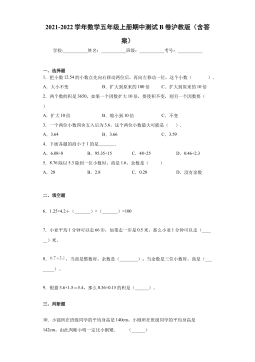金融危机背景下调整出口退税政策影响研究
摘要1997年泰国放弃固定汇率制度引发一场席卷整个东南亚地区的金融危机。受该次金融危机的冲击,我国外贸出口增长率几乎跌至零,为应对金融危机对我国经济的冲击,我国多次提高出口退税率,同时简化了出口退税申报程序。在出口退税政策的刺激下,1999年我国出口贸易在连续几个月下降的情况下,实现了全年出口增长6.1%。该次金融危机时期,出口退税政策调整配合其他政府措施的实施,使得我国出口贸易短期内迅速的摆脱了金融危机的影响,并且长期刺激了我国出口贸易的快速增长,提升我国对外贸易的国际地位。2008年全球金融危机爆发,受金融危机的影响,国外进口需求减少,我国外贸出口在2008年11月开始出现下滑。出口贸易情...
相关推荐
-
【拔高测试】沪教版数学五年级下册期末总复习(含答案)VIP免费

 2024-11-19 13
2024-11-19 13 -
【基础卷】小学数学五年级下册期末小升初试卷四(沪教版,含答案)VIP免费

 2024-11-19 8
2024-11-19 8 -
期中测试B卷(试题)-2021-2022学年数学五年级上册沪教版(含答案)VIP免费

 2024-11-19 8
2024-11-19 8 -
期中测试B卷(试题)- 2021-2022学年数学五年级上册 沪教版(含答案)VIP免费

 2024-11-19 10
2024-11-19 10 -
期中测试A卷(试题)-2021-2022学年数学五年级上册沪教版(含答案)VIP免费

 2024-11-19 14
2024-11-19 14 -
期中测试A卷(试题)-2021-2022学年数学五年级上册 沪教版(含答案)VIP免费

 2024-11-19 15
2024-11-19 15 -
期中测B试卷(试题)-2021-2022学年数学五年级上册 沪教版(含答案)VIP免费

 2024-11-19 11
2024-11-19 11 -
期中测A试卷(试题)-2021-2022学年数学五年级上册沪教版(含答案)VIP免费

 2024-11-19 22
2024-11-19 22 -
【七大类型简便计算狂刷题】四下数学+答案

 2025-03-18 6
2025-03-18 6 -
【课内金句仿写每日一练】四下语文

 2025-03-18 6
2025-03-18 6
相关内容
-

期中测试A卷(试题)-2021-2022学年数学五年级上册 沪教版(含答案)
分类:中小学教育资料
时间:2024-11-19
标签:无
格式:DOCX
价格:5 积分
-

期中测B试卷(试题)-2021-2022学年数学五年级上册 沪教版(含答案)
分类:中小学教育资料
时间:2024-11-19
标签:无
格式:DOCX
价格:5 积分
-

期中测A试卷(试题)-2021-2022学年数学五年级上册沪教版(含答案)
分类:中小学教育资料
时间:2024-11-19
标签:无
格式:DOCX
价格:5 积分
-

【七大类型简便计算狂刷题】四下数学+答案
分类:中小学教育资料
时间:2025-03-18
标签:数学计算;校内数学
格式:PDF
价格:1 积分
-

【课内金句仿写每日一练】四下语文
分类:中小学教育资料
时间:2025-03-18
标签:无
格式:PDF
价格:1 积分






